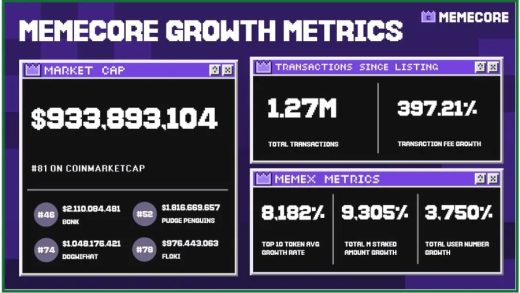1. Industry Risk Analysis
(1) Policy Risk
Currently, the video networking industry is in the transition stage from the policy formation period to the implementation period. The incomplete finalization of the policy framework leads to uncertainties in supervision. Entrepreneurs need to be vigilant about the sharp increase in compliance costs caused by the dynamic tightening of data security reviews and content supervision standards. Emerging technologies (such as AI video generation) may face sudden access restrictions, and cross – border businesses may fall into compliance dilemmas due to conflicts in international digital governance rules. At the same time, there is a risk of a trade – off between the short – term dividends and long – term stability of local government pilot policies.
(2) Economic Risk
The current video networking industry is facing dual pressures under economic cycle fluctuations: On the one hand, during the recession period, risk capital tends to be conservative, and the tightening financing environment puts pressure on the cash flow of start – up enterprises, forcing them to slow down the pace of R & D investment and market expansion. On the other hand, in the overheating period, it faces the risk of a technology bubble. The soaring cost of hardware iteration and excessive competition may trigger price wars. Especially when the construction of 5G supporting infrastructure lags behind, customers’ willingness to pay and ARPU are vulnerable to the impact of macro – economic weakness. Coupled with the periodicity of the hardware supply chain and the uncertainty of content supervision policies, video networking enterprises with light – asset operations have weak anti – cycle capabilities. The market demand side is vulnerable to the reduction of enterprise IT budgets and personal consumption downgrades, and there is a “death valley trap” where the business growth rate fails to meet expectations.
(3) Social Risk
The video networking industry faces the risk of a generational consumption structure fault. Young users prefer fragmented and highly interactive content forms, which conflicts with the needs of middle – aged and elderly users for stability and low learning costs, resulting in a split in product positioning. The high sensitivity of Generation Z to data privacy and the lag of supervision intensify the compliance risk, while the silver economy market has low commercial conversion efficiency due to high interaction thresholds. The rapid replacement of content forms driven by technological iteration is likely to trigger a value identity crisis among inter – generational users. Entrepreneurs need to balance high – frequency innovation and generational inclusiveness to avoid social media backlash caused by the “technology generation gap trap”.
(4) Legal Risk
The legal risks in the video networking industry are concentrated in three major areas: data privacy, intellectual property rights, and cross – border compliance. In the data collection stage, there is a risk of lack of user authorization (such as collecting biometric information without explicit consent), and in the storage and transmission stage, there is a risk of leakage compensation (the EU GDPR penalty can reach 4% of global revenue). Multi – modal content generation is likely to trigger copyright infringement (the ownership of AI training data is unclear), and there are disputes over the right of portrait in the commercialization of virtual images. When operating across borders, the conflict of data sovereignty intensifies (the data outbound control in China and the United States is tightened in the opposite direction), and the algorithm filing system and real – time supervision requirements form a compliance cost pressure. It is recommended to build a three – layer defense: embed a dynamic authorization module in the user agreement, introduce blockchain evidence storage in content review, and deploy an interpretable architecture for core algorithms.
2. Entrepreneurship Guide
(1) Suggestions on Entrepreneurship Opportunities
Currently, entrepreneurship opportunities in the video networking industry are concentrated in immersive interactive scenarios driven by 5G + XR technology, focusing on the clearly verified rigid – demand scenarios in the enterprise – level market: Firstly, develop a lightweight AR remote collaboration platform in the industrial maintenance field. By integrating end – side AI algorithms, real – time annotation of equipment failures and knowledge base calls can be realized, reducing the travel costs of experts. Secondly, create an interactive tour guide system integrating virtual and real in the smart cultural and tourism track. Combine spatial computing technology to achieve the digital twin reconstruction of historical scenes and enter the secondary consumption upgrade of scenic spots. Thirdly, develop a low – latency virtual teaching and research room solution in the vertical field of online education. Optimize through WebRTC and a lightweight 3D engine to lower the hardware threshold and meet the practical simulation needs of vocational training. Entrepreneurs should first choose niche scenarios that have been verified by the payment of benchmark customers, adopt a modular SaaS architecture to reduce deployment costs, and achieve light – asset operations through the equipment leasing + content subscription model.
(2) Suggestions on Entrepreneurship Resources
Entrepreneurs in the video networking industry should focus on three types of resources in resource integration: In terms of technical resources, they should first establish strategic cooperation with cloud service providers and 5G operators, share through API interfaces to reduce the development cost of underlying technologies, and apply for special subsidies for new infrastructure from local governments at the same time. In terms of data resources, they can connect with intelligent hardware manufacturers to obtain user behavior data sets, or use open – source video data sets to train AI algorithm models. For market verification resources, they need to cooperate with leading video platforms for joint R & D, use their existing user traffic to quickly test business models, and obtain initial orders by participating in government demonstration projects such as smart cities and industrial Internet. For talent resources, the key is to recruit a composite team with both streaming media protocol development and vertical industry experience, use equity incentives to bind core algorithm engineers, and poach technical backbones in the cloud game, AR/VR fields through industry forums.
(3) Suggestions on Entrepreneurship Teams
Entrepreneurs in the video networking industry need to build a core team around “technology – driven + scenario adaptation”, focusing on recruiting engineers with real – time video codec and edge computing development capabilities, and at the same time, configuring industry operators familiar with vertical fields such as radio and television, security, and medical care. It is recommended to adopt a “dual – track” architecture: the technical leader focuses on the underlying transmission protocol and hardware compatibility solutions, and the product manager focuses on the interaction logic design of B – end scenarios. The team must include at least one business member with more than 5 years of experience in radio and television network resource integration, focusing on solving the problems of content compliance review and transmission licenses. Equity distribution should be tilted towards the co – founders who can obtain smart city orders from local governments. In the early stage, the shareholding of technical talents should be avoided exceeding 40%. Regularly organize team members to participate in on – site customer development on a rotational basis to force the establishment of a common understanding of profitable scenarios such as industrial video diagnosis and 8K live broadcast.
(4) Suggestions on Entrepreneurship Risks
Entrepreneurs in the video networking industry should focus on vertical niche scenarios (such as industrial inspection and telemedicine) to first verify the practicality of technical solutions, reduce the initial R & D cost through modular development and open – source tools; closely monitor policy compliance, plan data privacy protection in advance (such as local processing instead of cloud transmission) and obtain relevant certifications; adopt the light – asset model of equipment leasing + service sharing to reduce the hardware investment risk, and at the same time, establish backup cooperation with more than 3 hardware suppliers; establish a minimum viable product to quickly enter the testing cycle (no more than 6 months), solve the pain point of the long customer procurement decision – making chain through contract energy management, reserve operating funds to cover 18 months of cash flow, and set up a technology iteration trigger mechanism (such as evaluating the progress of competitors quarterly) to adjust the R & D direction in time.





